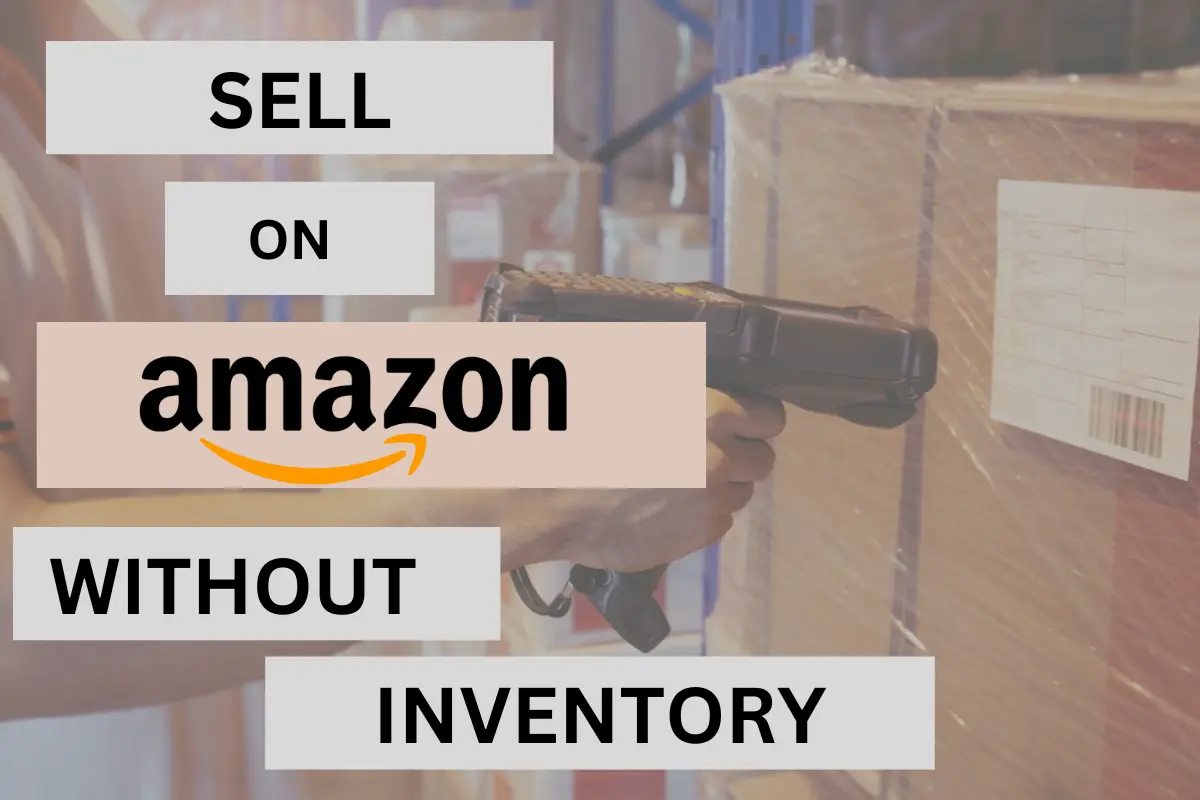Fake tracking numbers (FTNs) used to be one of the primary tools that dropshippers had in their toolbox to help them dropship successfully on marketplace sites like eBay and Amazon.
Generally speaking, that is no longer the case.
What was once a useful tool has quickly become an incredibly dangerous tool and is now likely to get sellers permanently banned from any Marketplace. This article will explore the history of fake tracking numbers, the sites that provide them, their use cases, and the pros and cons of using them.
Note: EcomCircles.com does not offer nor endorse the use of fake tracking numbers for any reason.
History of Fake Tracking Numbers used in Dropshipping
Once upon a time, dropshipping was incredibly easy. Courses such as DS Domination taught Amazon and eBay sellers alike how they could quickly and easily find profitable products to list from retail sites to the marketplace and sell them for easy profits. This is known as Online Arbitrage Dropshipping or Retail Arbitrage Dropshipping.
Early on, both Amazon and eBay allowed sellers to mark items as shipped with no tracking numbers. As long as sellers marked the items as shipped and the buyer did not complain, all was well with the world.
However, over the years, both platforms started to tighten their standards requiring that all sellers add valid tracking numbers in order to ensure that packages were actually being shipped and delivered to the buyers. Eventually, other marketplaces such as Walmart and Facebook have also opened their doors to sellers as well.
Amazon
For dropshippers, Amazon has plenty of workarounds to help keep healthy performance metrics. If an order could not be shipped out on time, a seller could simply mark it as shipped without a tracking number and then add the tracking number whenever it actually did ship. …or not. It didn’t matter. And, in the case that an item had to be canceled, sellers could simply mark it as shipped and then refund the customer to preserve their metrics and avoid the pre-fulfillment rate penalty.
Once Amazon started to enforce Valid Tracking as a part of a store’s health, the above loopholes started to close. Initially, Amazon still allowed items to be marked as shipped without a tracking number, but as of today, they require the tracking number to be added within a small time frame to be considered tracking. They have also closed the loophole which allowed sellers to ship items and then mark them as refunded.
Once these changes started to roll out on Amazon’s platform, using fake tracking numbers was a logical step for some dropshippers. Adding a “real” tracking number from USPS or FedEx which was shipped after that date of the sale and was scheduled to be delivered before the estimated delivery date became a way to avoid account health issues.
Fake tracking could be added to mark an order as shipped and then the real tracking number could be sent to the customer via email so that both Amazon and the customer were happy…only, Amazon wasn’t happy!
Amazon has since caught on to fake tracking. This was inevitable since
a) fake tracking numbers are unfortunately used by unscrupulous people who are trying to defraud both Amazon and buyers and
b) Amazon itself is one of the largest shippers of items in the US so it is highly likely that they can easily detect numbers that originated in their own system or those that have been used by multiple sellers.
The fake tracking number game on Amazon is over. Very understandably, they seem to be viewing the use of any fake tracking as an attempt at fraud. They deactivate any account using fake tracking numbers issuing it a Section 3 policy violation.
Walmart
When Walmart opened the doors to marketplace sellers dropshippers flocked to the platform only to find out that Walmart did not allow Amazon as a supplier. Walmart had the foresight to block AMZL tracking numbers from being added via their Seller Center portal. But that wasn’t going to stop dropshippers.
To get around this, dropshippers utilized one of a few different methods to get around Walmart’s restriction of AMZL tracking numbers. The first was tracking conversion services such as Bluecare Express (BCE). This conversion service allowed AMZL tracking to be “converted” or “cloaked.” At only $0.05-$0.10/package, it was an affordable way to convert tracking numbers.
A second way that sellers tried to get around AMZL tracking was to use Letter-Track.com. Letter-Track is a service created for the purpose of tracking letters through the mail using the post office’s internal tracking system since there is otherwise no way to track envelopes or small packages sent through USPS.
Since the cost to track a package is cheap, some sellers sent letters to each of their buyers and uploaded letter-track tracking instead of the actual AMZL tracking since those numbers were not accepted by Walmart.
Other sellers opted to send out certified mail letters since they have a USPS tracking number in the expected format. However, at roughly $3.50/envelope, this was a steep price to pay for many dropshippers when profits are sometimes only $2-$5/package. And of course, the final method of getting around Walmart’s no-TBA number policy was to utilize fake tracking numbers in place of Amazon tracking.
Bluecare Express (BCE) was arguably the most widely used workaround for Walmart’s no TBA number policy, but it quickly ran into issues when Amazon removed public access to tracking orders. Bluecare Express operated (and still operates) by scraping Amazon’s shipment pages to get all of the shipment updates from the time the order is placed to the time it is delivered.
When Amazon restricted these updates from being seen by anyone who was not logged into the account which had placed the order, it resulted in many package shipment details not getting updated. Even though BCE had provided a workaround to users, most sellers using it were either ignorant of the workaround or simply too lazy to bother with it.
This resulted in tens of thousands of packages showing no tracking to Walmart users and likely brought much undue attention to the use of BCE tracking numbers on Walmart. It’s likely that this expedited the closing of the BCE loophole on Walmart.
Once Walmart discovered Bluecare Express was a proxy for Amazon, they suspended nearly all users who had used Bluecare Express in the previous 90 days. The most affected were sellers that were past some kind of introductory grace period. With BCE no longer an option, dropshippers mostly turned to fake tracking numbers.
Unfortunately for dropshippers, Walmart has taken a very harsh stance against fake tracking numbers, and using them nearly always results in the seller’s Walmart account being terminated.
It’s highly likely that Walmart simply does a comparison of tracking numbers in its own database which originated for shipments they are sending out to those used by 3rd party sellers on their platform and was easily able to identify sellers using numbers that originated within Walmart itself.
It’s also possible that they are flagging whenever tracking numbers are duplicated in their system. So, in the end, the use of fake tracking numbers on Walmart has become a very poor practice for dropshippers and will almost certainly result in the termination of the account.
eBay
eBay’s policies are more lax than either Amazon’s or Walmart’s. At the time of this article, eBay allows tools that convert AMZL tracking to be considered valid tracking, and while valid tracking is required to become a Top Rated Seller, it is not absolutely necessary.
eBay has tried to crack down on poor performers (and some dropshippers are unfortunately very bad performers) that use retailers as suppliers through their Item Location Policy and their MC011 Restrictions.
Facebook Marketplace / Shops
Being a new marketplace, Facebook does not seem to have many restrictions or parameters around the use of fake tracking numbers. However, it is likely only a matter of time before they also ban sellers who use fake tracking.
AMZL Tracking Number Conversion Tools
Bluecare Express
One of the most widely used tools in this category is called Bluecare Express. Listed on eBay as a valid carrier, Bluecare Express allows sellers to convert Amazon tracking numbers (aka AMZL tracking) into a Bluecare Express (or BCE) tracking number. BCE also provides an easy-to-use search on their website for anyone to search and they provide logistics monitoring for the progress of packages that have a BCE tracking number.
Technically these are not fake tracking numbers but “cloaked” or “converted” tracking numbers representing a real package that has been shipped by Amazon Logistics (TBA Numbers). This was helpful to sellers dropshipping from Amazon in two ways.
Firstly, it provides a tracking number that would be accepted on a marketplace site to mark an order as shipped. Secondly, it provided a buyer-facing link so that buyers could track the progress of their package since any link provided to the Amazon shipment progress would be restricted behind a login.
Aquiline
Similar to Bluecare Express, Aquiline also converts AMZL tracking numbers into their own version of a tracking number. However, they also go a step further in that tracking numbers from other services can also be converted into Aquiline numbers and tracked. This is helpful when shipping items from AliExpress Standard Shipping or other similar shipping services that do not provide adequate tracking.
For eBay sellers, Aquiline also can alter the originating zip code (called “zip code masquerade” or “zip code masking”) so that the tracking appears to comply with eBay’s zip code policy. Aquiline is a recognized carrier service by eBay and therefore Aquiline tracking can legitimately be used on eBay as valid tracking.
Bluecare Express and Aquiline are both still used heavily by some dropshippers on eBay, Shopify, Wix, Woocommerce, BigCommerce, and Facebook Marketplace.
Fake USPS Tracking Number Generator Tools
(Most generate Fake FedEx Tracking also)
The following tools all operate in the same basic way. They allow users to buy “real” fake USPS tracking numbers and fake FedEx tracking numbers, which are going to a specified zip code within a specified date range. These tracking numbers are “real” in that they represent an actual package that has been shipped from these carriers but they are used for a different shipment.
Get More Tracks
While at a quick glance, the Get More Tracks website looks like a mobile app that’s available for download, in reality, it is a fake tracking number generator site that can generate fake USPS tracking and fake FedEx tracking. The price ranges from $0.20 to as low as $0.02 per tracking number depending on the amount that you purchase.
Track Taco (Previously OA Genius Tracking)
OA Genius built its own fake tracking generator, Track Taco, about the time that Bluecare Express lost viability as a workaround for sellers dropshipping from Amazon to Walmart. Their prices range from $0.25 to as low as $0.125, and their service integrates directly with their Sage product to allow dropshippers to generate fake tracking numbers easily.
Trackerbot.me
Trackerbot.me is one of the oldest tools available for fake tracking being around maybe as far back as 2015 as a Chrome extension that provided fake tracking. It didn’t work for quite some time, but it seems to be working again and is used mostly by eBay dropshippers for fake tracking, though they also say that they support dropshippers selling on Amazon as well through BCE.
Shipper Store (previously Shipper Bay)
Yet another fake tracking site, ShipperStore also provides tracking numbers amongst other features such as helping dropshippers find hot products on eBay and Amazon.
Fake USPS tracking numbers “work” because the privacy concerns of mainline carriers prevent them from listing the destination address on a public-facing page, which shows shipping details. The only indicator shown is the zip code. Therefore, a tracking number that is being shipped to the same zip code as the buyer appears to be getting shipped to the proper location.
GetTNShip.com
A newer site that has started growing in popularity recently is GetTNShip.com. While most of the above tools support USPS and Fedex tracking numbers, gettnship.com also supports not only UPS but also DHL tracking number generation.
Having even more carriers increases the supply of tracking numbers available for dropshippers to pull from. Pricing ranges from about $0.125 on the high end to just under $0.04 cents on the low end depending on how many credits you buy at one time. Their platform also allows for sub-users which is a helpful addition for growing teams.
Use Cases for Fake Tracking Numbers
Replace Amazon Logistics Tracking Numbers
Most Marketplace platforms such as eBay and Walmart do not allow Amazon Logistics tracking numbers to be uploaded because they do not want sellers to ship items directly from Amazon to buyers.
Once Amazon started delivering packages using its own Logistics service, a workaround was needed for sellers to continue to ship items directly from Amazon while bypassing the use of the Amazon Logistics Tracking numbers.
Avoid Poor Performance Metrics
Since dropshippers are not in control of the entire supply chain for products that they are listing to Marketplace sites, it can sometimes be difficult to maintain performance health metrics. Fake tracking numbers helped to solve this problem by allowing sellers to enter a tracking number in order to mark an order as shipped on time so that it would not be marked as late and therefore affect their performance metrics.
Give the Appearance of Better Updates
When shipping some items from overseas, tracking can be very poor and tracking updates are not as available as US buyers would anticipate. Therefore, using fake tracking numbers that give the appearance that the package is making progress gives buyers a view of their shipment that accurately matches their expectations, even though the appearance given is false.
Fraud and Fake Tracking
From the marketplace’s perspective, there is no way to validate whether a dropshipper is using a fake tracking number as a proxy for the real tracking number or if a fraudster is simply trying to scam both the marketplace and its buyers.
It is for this reason that both Amazon and Walmart have removed a combined guesstimated 25,000+ sellers from their platforms for the use of fake tracking numbers (though that reason is never explicitly given by either marketplace).
With the possible exception of eBay, marketplace sites seem to consider fake tracking numbers as being too high of a risk to buyers and therefore to trust in their platform to allow dropshippers (or fraudsters!) to continue to use them on their platforms.
How Fake Tracking is Likely Caught by Marketplaces
Amazon and Walmart are two of the largest companies in the world and they each ship a substantial amount of packages themselves every single day. It would not be a difficult task for them to compare all tracking numbers added by 3rd parties to the tracking numbers which originated from their own distribution warehouses to see if there is any overlap.
Since they have certainty that any duplicate tracking numbers originated with them, it’s easy to assume that any 3rd party using these tracking numbers is doing so illegitimately.
Additionally, since there are multiple tools that collect and sell “real” tracking numbers, it is highly likely that the numbers purchased from these services will also be purchased for use by a different seller from a different service. This would result in tracking numbers being duplicated in the marketplace’s ecosystem which would be easy enough for any of the marketplaces to detect.
Conclusion
While fake tracking numbers were an incredibly useful tool for dropshippers, these days, using them typically results in a seller getting permanently banned from Amazon or Walmart. For the time being, they can technically still be used on other platforms.
But serious dropshippers should consider that it is likely only a matter of time before other marketplaces take similar action to those of Amazon and Walmart and should move towards being as compliant as possible with marketplaces’ terms of service and shipping policies. Continuing to use fake tracking numbers puts a dropshipper’s business at considerable risk.





